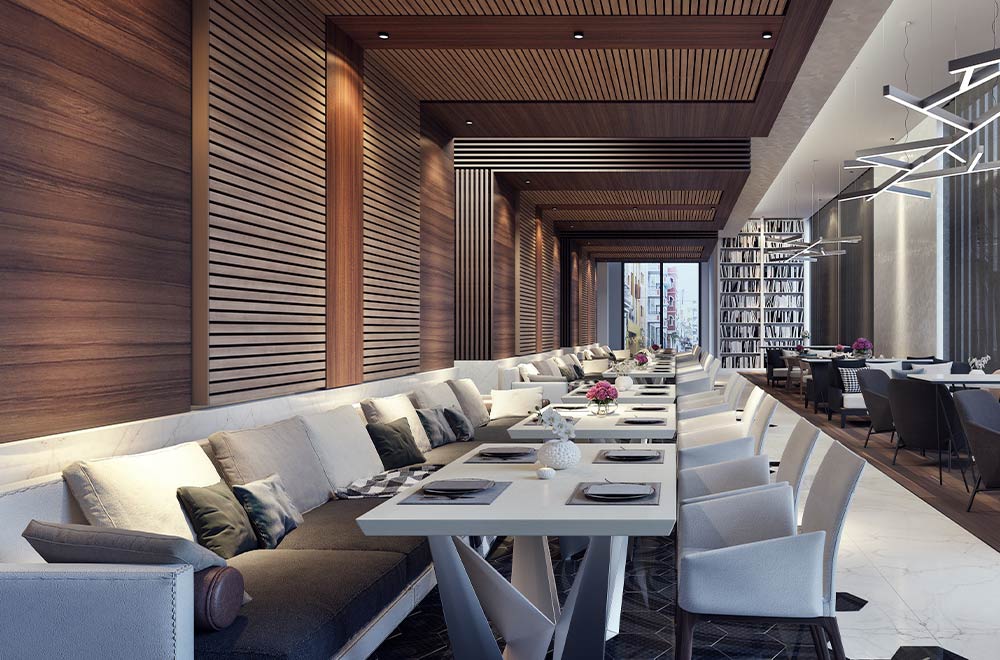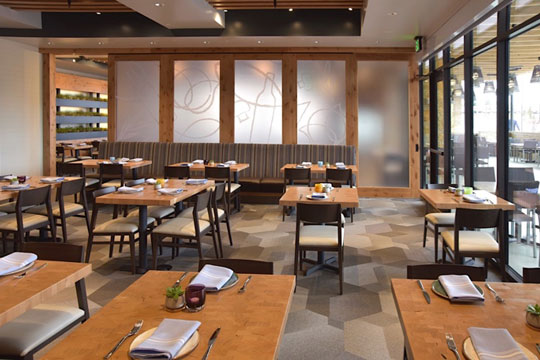Asian Fusion Restaurant: A Special Dining Experience in the Heart of Islamabad
Asian Fusion Restaurant: A Special Dining Experience in the Heart of Islamabad
Blog Article
Savor Genuine Eastern Cuisine With a Pan-Asian Twist for a Cooking Adventure
Getting started on a cooking journey through authentic Eastern cuisine, improved with a Pan-Asian spin, supplies an unique chance to explore the rich tapestry of flavors that specify the region's varied culinary customs. As you ponder these attracting meals, consider the cultural stories and historic influences that shape them, each bite offering a story waiting to be discovered. Instagrammable restaurants Islamabad.

Discovering Pan-Asian Tastes
In the realm of global gastronomy, Pan-Asian cuisine stands out for its impressive variety and the harmonious interplay of flavors from different Eastern societies. This culinary method commemorates the one-of-a-kind active ingredients and rich customs found throughout the continent, producing a tapestry of preferences that is both interesting and rewarding. Key to Pan-Asian food is its ability to stabilize contrasting flavors-- wonderful, salty, spicy, and sour-- while highlighting the quality and top quality of each ingredient.
From the umami-rich soy sauce of Japan to the fiery chili peppers of Thailand, Pan-Asian food uses a considerable combination of flavors. These aspects are typically combined in creative ways, improving meals with layers of intricacy. For circumstances, making use of great smelling natural herbs such as lemongrass and cilantro, common in Vietnamese and Thai food, includes a rejuvenating illumination to dishes, while the unification of coconut milk delivers a creamy, rich texture.
The focus on fresh produce and aromatic flavors guarantees that each dish is not just a feast for the taste buds but additionally for the senses. Pan-Asian food welcomes diners to start a cooking trip, discovering the vast and varied landscapes of Asian gastronomy with every bite.
Fusion Meals to Try
While Pan-Asian cuisine is commemorated for its typical flavors, the contemporary cooking landscape is progressively accepting combination meals that mix these classic elements with influences from other regions. This cutting-edge technique not only honors the rich heritage of Eastern cooking arts yet also introduces unique preference experiences that attract contemporary tastes buds.
An archetype of such a fusion recipe is the Korean-Mexican taco, where seasoned bulgogi beef is covered in a warm tortilla, topped with kimchi and a zesty gochujang-infused salsa. This combination marries the vibrant, full-flavored tastes of Korea with the dynamic, fresh aspects of Mexican cuisine. Likewise, sushi burritos have actually acquired appeal, joining together the delicate creativity of Japanese sushi with the passionate, hand-held benefit of a burrito, usually including blend components like tempura shrimp and avocado with a drizzle of wasabi mayo.
Another significant dish is Thai curry ramen, which infuses the luscious, fragrant seasonings of Thai curry right into the calming broth of standard Japanese ramen, producing a harmonious blend that tantalizes the senses. These fusion recipes prolong past mere uniqueness; they stand for a cooking discussion between cultures, urging expedition and advancement on the planet of Pan-Asian cuisine.
Necessary Active Ingredients and Spices
To really value Pan-Asian food, one should comprehend the important active ingredients and flavors that form its foundation. This diverse cooking design attracts from an abundant tapestry of Eastern practices, using an unified blend of flavors and structures. Key active ingredients include soy sauce, fish sauce, and oyster sauce, which impart a full-flavored umami deepness important to Asian dishes. Corresponding to these are rice vinegar and mirin, lending a fragile acidity and sweetness.
Fragrant elements are crucial, with ginger, lemongrass, and garlic being common across numerous Pan-Asian recipes. These components provide a great smelling base that improves the complexity of tastes. Flavors such as celebrity anise, cardamom, and cinnamon present heat and personality, echoing impacts from regions like China and India.

Cooking Methods and Tips
Understanding the art of Pan-Asian cuisine calls for familiarity with its distinct food preparation methods, each contributing to the vibrant tapestry of flavors this cooking practice is celebrated for. Central to these methods is the stir-fry, a rapid food preparation strategy that maintains the nutritional integrity and brilliant shades of ingredients. Using a wok, the stir-fry technique enables even heat distribution, essential for achieving the characteristic texture and flavor equilibrium of Pan-Asian dishes.
One more basic technique is steaming, especially common in Chinese cuisine. This gentle approach preserves the all-natural flavors and nutrients of ingredients, making it perfect for tomo sushi fish and shellfish and vegetables. Dumplings, a beloved staple, often gain from steaming, resulting in soft, delicious textures.
Cooking, also essential, passes on smoky midsts to dishes such as Oriental bulgogi or Japanese yakitori (Fine dining experience Islamabad). This strategy commonly includes seasoning active ingredients, enabling tastes to permeate deeply before cooking over an open flame or warm plate
Lastly, mastering the art of balancing flavors-- pleasant, sour, salty, bitter, and umami-- is important. Correctly layering these components can boost a meal from average to amazing, using a complicated and pleasing culinary experience that symbolizes the essence of Pan-Asian cuisine.
Dining Experiences Worldwide
Across the world, Pan-Asian cuisine uses an unmatched eating experience, commemorated for its rich tapestry of flavors and vivid discussions. This cooking sensation has gone beyond social boundaries, catching the hearts and tastes buds of food enthusiasts worldwide. In worldwide cities fresh York, London, and Sydney, Pan-Asian restaurants function as fusions where cooking practices from Thailand, Japan, China, and beyond converge, providing diners with a diverse mix of dishes that highlight the area's variety.
The worldwide charm of Pan-Asian cuisine depends on its capability to provide both credibility and advancement. Chefs masterfully marry standard active ingredients such as lemongrass, soy sauce, and miso with contemporary methods, causing recipes that are both refreshingly brand-new and familiar. This fusion enables diners to start a cooking trip that respects heritage while accepting modernity.
In addition, dining experiences are elevated through thoughtfully created atmospheres that reflect the values of Pan-Asian aesthetics. From minimalist Japanese-inspired insides to lively Thai-themed spaces, each restaurant supplies a special ambiance that enhances the culinary offerings. Therefore, customers are not simply consuming a meal however partaking in a cultural experience, making Pan-Asian dining a truly international phenomenon.
Final Thought
The exploration of Pan-Asian read the full info here cuisine supplies an extensive understanding of the detailed interaction of flavors and cooking practices throughout Asia. By accepting blend dishes such as Thai curry ramen and sushi burritos, the cooking journey not just highlights the versatility of traditional ingredients yet also showcases innovative modern methods. This gastronomic journey, enriched by cooking approaches and vital spices, gives an unique possibility to value the multiculturalism and cooking artistry that define Pan-Asian cuisine on a worldwide range.
Embarking on a cooking trip with authentic Asian food, boosted with a Pan-Asian twist, uses a distinct opportunity to check out the rich tapestry of tastes that define the region's diverse cooking traditions.In the world of global gastronomy, Pan-Asian food stands out you could try here for its exceptional diversity and the unified interaction of tastes from numerous Asian societies. Trick to Pan-Asian cuisine is its ability to balance different tastes-- pleasant, salted, spicy, and sour-- while highlighting the quality and high quality of each active ingredient.

Report this page